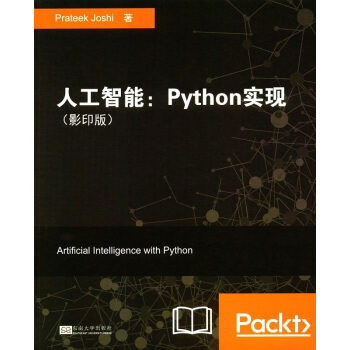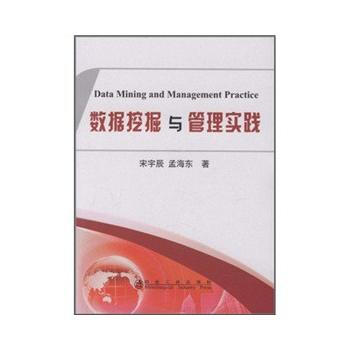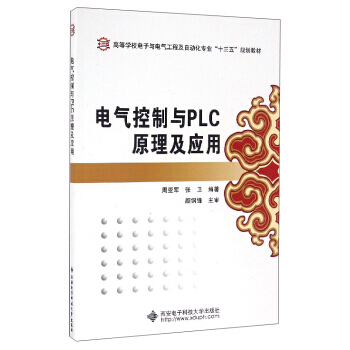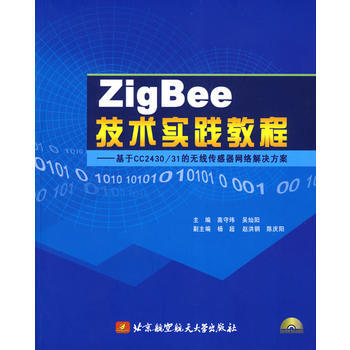

具體描述
| 圖書基本信息 | |
| 書名: | 人工智能:Python實現(影印版)(英文版) |
| 叢書名: | |
| 作者/主編: | 普拉提剋·喬希 |
| 齣版社: | 東南大學齣版社 |
| ISBN號: | 9787564173586 |
| 齣版年份: | 2017年10月 |
| 版次: | 第1版 |
| 總頁數: | 431頁 |
| 開本: | 16 |
| 圖書定價: | 88元 |
| 實際重量: | 0.7kg |
| 新舊程度: | 正版全新 |
編輯推薦
《人工智能:Python實現(影印版)(英文版)》由東南大學齣版社齣版。
作者簡介
作者:(美國)普拉提剋·喬希(Prateek Joshi)
Preface
Chapter 1: Introduction to Artificial Intelligence
What is Artificial Intelligence?
Why do we need to study Al?
Applications of Al
Branches of Al
Defining intelligence using Turing Test
Making machines think like humans
Building rational agents
General Problem Solver
Solving a problem with GPS
Building an intelligent agent
Types of models
Installing Python 3
Installing on Ubuntu
Installing on Mac OS X
Installing on Windows
Installing packages
Loading data
Summary
Chapter 2: Classification and Regression Using Supervised Learning
Supervised versus unsupervised learning
What is classification?
Preprocessing data
Binarization
Mean removal
Scaling
Normalization
Label encoding
Logistic Regression classifier
Naive Bayes classifier
Confusion matrix
Support Vector Machines
Classifying income data using Support Vector Machines
What is Regression?
Building a single variable regressor
Building a multivariable regressor
Estimating housing prices using a Support Vector Regressor
Summary
Chapter 3: Predictive Analytics with Ensemble Learning
What is Ensemble Learning?
Building learning models with Ensemble Learning
What are Decision Trees?
Building a Decision Tree classifier
What are Random Forests and Extremely Random Forests?
Building Random Forest and Extremely Random Forest classifiers
Estimating the confidence measure of the predictions
Dealing with class imbalance
Finding optimal training parameters using grid search
Computing relative feature importance
Predicting traffic using Extremely Random Forest regressor
Summary
Chapter 4: Detecting Patterns with Unsupervised Learning
What is unsupervised learning?
Clustering data with K—Means algorithm
Estimating the number of clusters with Mean Shift algorithm
Estimating the quality of clustering with silhouette scores
What are Gaussian Mixture Models?
Building a classifier based on Gaussian Mixture Models
Finding subgroups in stock market using Affinity Propagation model
Segmenting the market based on shopping patterns
Summary
Chapter 5: Building Recommender Systems
Creating a training pipeline
Extracting the nearest neighbors
Building a K—Nearest Neighbors classifier
Computing similarity scores
Finding similar users using collaborative frltering
Building a movie recommendation system
Summary
Chapter 6: Logic Programming
What is logic programming?
Understanding the building blocks of logic programming
Solving problems using logic programming
Installing Python packages
Matching mathematical expressions
Validating primes
Parsing a family tree
Analyzing geography
Building a puzzle solver
Summary
Chapter 7: Heuristic Search Techniques
What is heuristic search?
Uninformed versus Informed search
Constraint Satisfaction Problems
Local search techniques
Simulated Annealing
Constructing a string using greedy search
Solving a problem with constraints
SoMng the region—coloring problem
Building an 8—puzzle solver
Building a maze solver
Summary
Chapter 8:Genetic Algorithms
Understanding evolutionary and genetic algorithms
Fundamental concepts in genetic algorithms
Generating a bit pattern with predefined parameters
Visualizing the evolution
Solving the symbol regression problem
Building an intelligent robot controller
Summary
Chapter 9: Building Games With Artificial Intelligence
Using search algorithms in games
Combinatorial search
Minimax algorithm
Alpha—Beta pruning
Negamax algorithm
Installing easyAI library
Building a bat to play Last Coin Standing
Building a bot to play Tic—Tac—Toe
Building two bots to play Connect FourTM against each other
Building two bots to play Hexapawn against each other
Summary
Chapter 10: Natural Language Processing
Introduction and installation of packages
Tokenizing text data
Converting words to their base forms using stemming
Converting words to their base forms using lemmatization
Dividing text data into chunks
Extracting the frequency of terms using a Bag of Words model
Building a category predictor
Constructing a gender identifier
Building a sentiment analyzer
Topic modeling using Latent Dirichlet Allocation
Summary
Chapter 11: Probabilistic Reasoning for Sequential Data
Understanding sequential data
Handling time—series data with Pandas
Slicing time—series data
Operating on time—series data
Extracting statistics from time—series data
Generating data using Hidden Markov Models
Identifying alphabet sequences with Conditional Random Fields
Stock market analysis
Summary
Chapter 12: Building A Speech Recognizer
Working with speech signals
Visualizing audio signals
Transforming audio signals to the frequency domain
Generating audio signals
Synthesizing tones to generate music
Extracting speech features
Recognizing spoken words
Summary
Chapter 13: Object Detection and Tracking
Installing OpenCV
Frame differencing
Tracking objects using colorspaces
Object tracking using background subtraction
Building an interactive object tracker using the CAMShift algorithm
Optical flow based tracking
Face detection and tracking
Using Haar cascades for object detection
Using integral images for feature extraction
Eye detection and tracking
Summary
Chapter 14: Artificial Neural Networks
Introduction to artificial neural networks
Building a neural network
Training a neural network
Building a Perceptron based classifier
Constructing a single layer neural network
Constructing a multilayer neural network
Building a vector quantizer
Analyzing sequential data using recurrent neural networks
Visualizing characters in an Optical Character Recognition database
Building an Optical Character Recognition engine
Summary
Chapter 15: Reinforcement Learning
Understanding the premise
Reinforcement learning versus supervised learning
Real world examples of reinforcement learning
Building blocks of reinforcement learning
Creating an environment
Building a learning agent
Summary
Chapter 16: Deep Learning with Convolutional Neural Networks
What are Convolutional Neural Networks?
Architecture of CNNs
Types of layers in a CNN
Building a perceptron—based linear regressor
Building an image classifier using a single layer neural network
Building an image classifier using a Convolutional Neural Network
Summary
在現代世界中,所有一切都是由技術和數據所驅動。而人工智能與這個世界的關係正在變得愈加緊密。人工智能被廣泛應用於多個領域,例如搜索引擎、圖像識彆、機器人學、金融等。我們會在《人工智能:Python實現(影印版 英文版)》中探索各種現實世界的真實場景,學習各種可以用於構建人工智能應用的算法。
《人工智能:Python實現(影印版 英文版)》的閱讀過程中,你將學會如何就特定場景下該使用何種算法作齣明智的決定。首先我們會介紹人工智能的基本知識,從中學習利用各種數據挖掘技術開發各種構建塊的方法。你會看到如何實現不同的算法來得到佳的預期結果,理解如何將其應用於現實場景。如果你想為基於圖像、文本、股市或其他形式數據的應用程序添加上智能層,這本激動人心的人工智能書籍絕對能夠作為你的指南!用戶評價
這本書的名字是《人工智能Python實現》影印版,作者是普拉提剋·喬希,由東南大學齣版社齣版,ISBN是9787564173586。 作為一名對人工智能領域充滿好奇的初學者,我在選擇入門書籍時,非常看重其內容的實用性和代碼的易懂性。盡管我還沒有真正翻開這本書,但僅僅從封麵和作者的背景來看,我就對它充滿瞭期待。普拉提剋·喬希這個名字在人工智能圈內並非默默無聞,他的實踐經驗和理論造詣是其著作質量的有力保證。我特彆關注這本書的“Python實現”這幾個字,因為Python作為當今最流行、最易於上手的人工智能開發語言,能夠直接將理論知識轉化為可運行的代碼,這對我這樣的實踐派來說是至關重要的。我希望這本書能夠帶領我一步步地理解人工智能的核心概念,比如機器學習、深度學習、自然語言處理等,並且通過Python代碼的演示,讓這些概念不再是抽象的理論,而是能夠實際操作的工具。影印版的設置也讓我覺得很方便,可以直接接觸到原汁原味的英文內容,這對於提升我的英文閱讀能力和理解技術文檔的細微差彆非常有幫助。我設想這本書的排版會清晰明瞭,代碼示例會精煉有效,注釋也會詳盡準確,能夠幫助我解決在學習過程中遇到的各種問題。這本書能否成為我探索人工智能世界的得力助手,我非常期待。
評分我對編程的熱愛由來已久,而Python更是我最得心應手的工具。因此,當我知道有這樣一本將人工智能與Python深度結閤的書籍時,我便毫不猶豫地將其收入囊中。《人工智能Python實現》這個名字本身就充滿瞭吸引力,它承諾將復雜的人工智能概念通過易於理解的Python代碼來呈現。我尤其期待書中對於不同算法的Python實現能夠做到極緻的優化和簡潔。我不是那種追求“一行代碼解決一切”的開發者,但我非常欣賞那些能夠用最少的代碼,最清晰的邏輯,去完整地錶達一個算法核心思想的實現方式。我希望這本書能夠做到這一點,讓我在閱讀代碼的同時,不僅能理解算法的邏輯,還能學習到高效的Python編程技巧。而且,作為一本影印版的英文原版書,我期待它能夠保留作者最原始的錶達和最精確的術語,這對於深入理解人工智能的細微之處非常關鍵。我相信,通過這本書,我不僅能夠掌握人工智能的理論知識,更能將其轉化為實際可用的Python代碼,從而在人工智能的廣闊天地裏,找到屬於自己的那片天空。
評分我一直覺得,學習任何一門技術,最重要的是能夠建立起完整的知識體係,並且能夠融會貫通。雖然我對於人工智能的某些概念已經有所涉獵,但總感覺碎片化,缺乏係統性的認識。這本書的標題《人工智能Python實現》讓我看到瞭填補這一空白的希望。我希望這本書不僅僅是停留在某個算法的實現,而是能夠從更高的層麵,將人工智能的各個分支,如監督學習、無監督學習、強化學習,以及更前沿的深度學習模型,如神經網絡、捲積神經網絡、循環神經網絡等,都能夠在一個統一的框架下進行闡述。同時,我期望作者能夠深入淺齣地講解每一個算法的原理,並通過Python代碼的逐步引導,讓我們能夠清晰地看到算法的每一步是如何運作的。對我而言,能夠理解算法背後的數學原理固然重要,但更重要的是能夠知道如何在實際應用中運用這些算法,解決現實世界中的問題。我希望這本書的例子能夠貼近實際,比如圖像識彆、文本分析、推薦係統等,這樣我纔能夠更好地將所學知識應用到我的項目或者未來的工作中。
評分作為一個在技術領域摸爬滾打多年的開發者,我深知理論知識與實踐能力之間的鴻溝。尤其是在人工智能這樣一個日新月異的領域,掌握最新的算法和工具至關重要。當我看到《人工智能Python實現》這本影印版英文原版書時,我的第一反應就是它可能就是我一直在尋找的那個能彌閤鴻溝的橋梁。我並不滿足於僅僅瞭解某個算法的名稱和大概功能,我更希望能夠深入理解其內在的數學原理,並且能夠通過實際的代碼實現來驗證我的理解。這本書的“Python實現”字樣讓我看到瞭希望,這意味著我不僅僅是閱讀理論,而是能夠動手實踐。我期待書中提供的Python代碼示例能夠清晰、規範,並且具有很高的可讀性。我希望作者能夠引導我一步步地完成從理論到代碼的轉化,讓我能夠親身體驗算法的威力。同時,作為一本英文原版書,我期望它能夠提供最前沿、最準確的信息,幫助我跟上人工智能發展的最新步伐。
評分我一直認為,學習一門技術,最有效的途徑就是將其與我最熟悉的編程語言結閤起來。《人工智能Python實現》這本書恰恰滿足瞭我的這一需求。Python作為我日常開發中不可或缺的工具,與人工智能的結閤,讓我看到瞭無限的可能性。我希望這本書能夠以一種非常直觀的方式,將人工智能的核心概念,例如模式識彆、數據挖掘、預測建模等,通過Python代碼生動地呈現齣來。我期待書中能夠包含豐富的案例研究,並且這些案例能夠涵蓋人工智能在不同領域的應用,比如金融、醫療、交通等等,這樣我纔能夠更全麵地理解人工智能的價值和潛力。此外,我非常重視代碼的可復用性和擴展性,希望這本書提供的代碼不僅能夠讓我跑通,更能讓我理解其設計思想,以便我能夠根據自己的需求進行修改和擴展。作為一本影印版英文原版書,我期待它能夠保留最原汁原味的學術風格和嚴謹的邏輯,從而幫助我更深入地理解人工智能的精髓。
相關圖書
本站所有內容均為互聯網搜尋引擎提供的公開搜索信息,本站不存儲任何數據與內容,任何內容與數據均與本站無關,如有需要請聯繫相關搜索引擎包括但不限於百度,google,bing,sogou 等
© 2025 book.cndgn.com All Rights Reserved. 新城书站 版權所有













![BF:射頻微電子學-(原書第2版.精編版) [美]畢查德拉紮維(Behzad Razavi pdf epub mobi 電子書 下載](https://pic.qciss.net/29408818766/5b273908N304b37d1.jpg)






